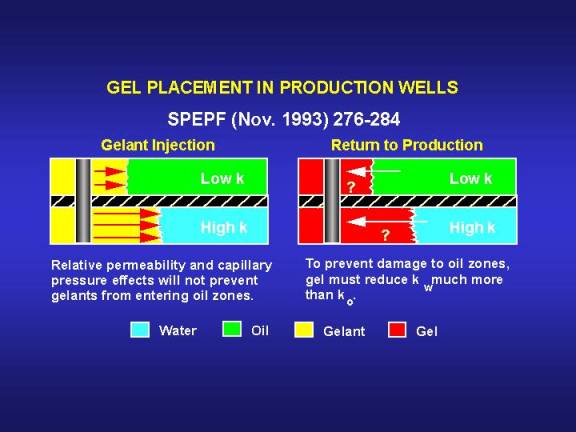Can Relative-Permeability Effects Be Exploited to Prevent Gelants from Entering Oil Zones?
No.
A common misconception was that water-based gelants enter zones with high water saturations much more readily than zones with high oil saturations. If correct, very few waterfloods would work because water must enter and displace hydrocarbons from the oil zones. In part, this misconception occurs because people recognize that the relative permeability to water is very low at high oil saturations. However, this view fails to consider that a "shock front" forms between an oil bank and the water bank, which was injected to displace the oil. At this shock front, the water saturation increases sharply from low to high values.18 Of course, the relative permeability to water is greatest at high water saturations.
We examined the relative distances of penetration of water-based gelants into oil versus water zones as a function of permeability contrast (1 to 1,000), water or oil saturation (0.2 to 0.8), oil/water viscosity ratio (0.1 to 100), endpoint water relative permeabilities ranging from 0.1 to 0.7, and in fractured and unfractured wells.18These conditions cover most known field and laboratory applications. Straightforward applications of fractional-flow theory and material balance calculations demonstrated that gelants can penetrate significantly into all open zones in production wells-not just those with high water saturations (Fig. 5). Ref. 18 demonstrates that except for reservoirs with high oil/water viscosity ratios (i.e., 100 or greater), the relative distances of gelant penetration into different zones will be quite similar to those determined from simple calculations using the Darcy equation.
